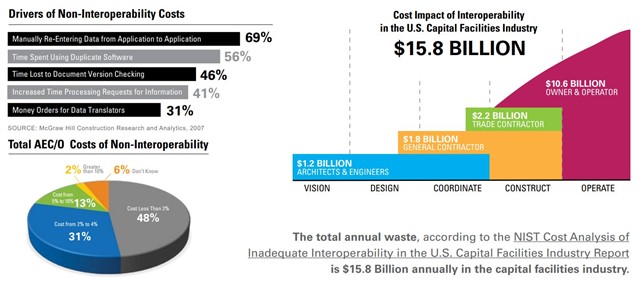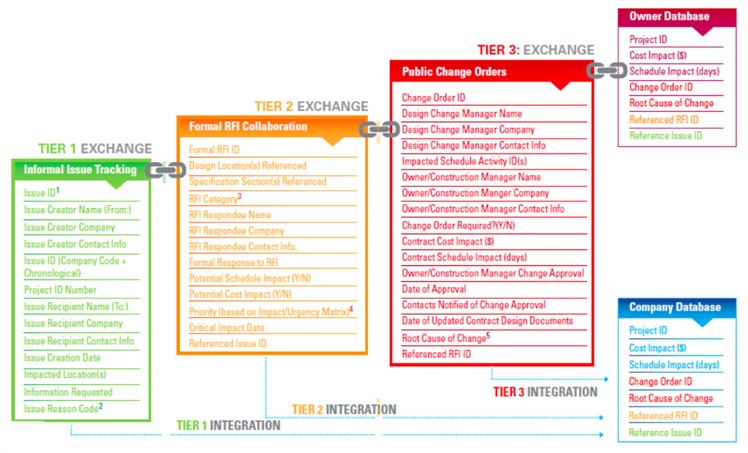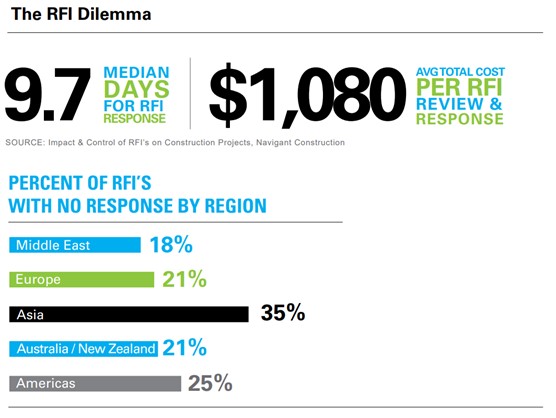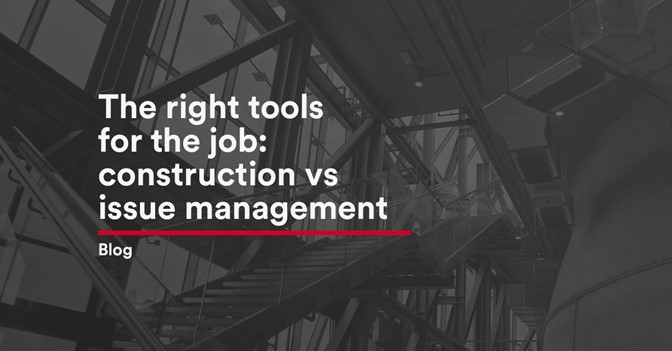What you use matters: you need the best tools for the job. Construction management or issue management software? The platforms can feel really similar with informal chat, etc., but each is a specialist tool for different parts of your projects. Let’s look at each and then jump into how they can best work together.
Construction management software 101
A construction management platform’s “raison d’etre” is to plan, organize, and manage resources. Depending on the software, it can manage:
- Estimation & planning
- Scheduling
- Bid management
- Cost control & budget management
- Resource allocation
- Document sharing
- Analytics for decision making & QM
- Connecting to document management, contract management and other administrative systems.
There are lots of construction management platforms available today, including Aconex, CMIC, Colaborativo & Procore. Savings from construction management platforms come from efficient handling of documents and field / construction progress monitoring.
Issue management software
An issue management platform, on the other hand, gathers issues from multiple sources, using software integrations or “apps.” A good issue management platform must be able to track the evolution and resolution of all types of issues, create detailed reports and automate collaboration workflows. It must act as a real-time communications solution, providing issue transparency and accountability for all stakeholders, team members and trade professionals. A good example of this type of platform would be JIRA in the IT industry. BIM Track is using a similar approach in the AEC industry.
Issue management platforms generate value by solving interoperability issues, which have very real costs associated. Interoperability issues from the beginning of a project until the start of the construction phase represent approximately $3.5B in waste in the US alone, according to the NIST Cost Analysis of Inadequate Interoperability in the U.S. Capital Facilities Industry.

Figure 1.0 Costs associated with RFIs. Image from the Construction Progress Coalition’s 2017 Open Integration report.
So what’s the best workflow to integrate the two?
To understand the best workflow between the two software types, we must first understand there are two different types of issues: informal & formal. An informal issue is the start of an issue, generally from the conception to pre-construction phases. Something that is a formal issue is an RFI, usually occurring between pre-construction and commissioning. Below you can see what sort of parameters should be included for an informal issue vs a formal one:

Figure 2.0 -Tier one exchange are informal issues and Tier 2 are formal RFIs. Image from the Construction Progress Coalition’s 2017 Open Integration report.
We can use these types of issues to help us define the best use of each software, because informal, or Tier 1 level issues and their associated parameters, are best suited to issue management software, while Tier 2 level issues and their parameters are best managed by construction management software.
These two different types of issues also occur at different project stages, giving us a clear role for issue management and construction management platforms at each stage of the project lifecycle.

Figure 3.0 Workflow between issue management & construction management software by construction phase (Image by BIM Track).
Project issues should be raised (and hopefully many resolved!) during conception, design & pre-construction phases using issue management platforms. Issue tracking should be done from the very start of the project to have the best possible impact on the bottom line. Issues occuring during the construction phase (RFIs) should be managed using construction management software because formal RFIs are usually tied to the contract.

Figure 4.0 – Informal vs formal boundaries. Image from the Construction Progress Coalition’s 2017 Open Integration report.
This was further explained in the Construction Progress Coalition’s 2017 Open Integration report. Alternatively, you can check out this video explanation here on their YouTube channel.
What is the benefit of connecting issue & construction management platforms?
The main driver behind connecting issue management platforms with construction management platforms is shortening the RFI resolution process. This reduces the average cost related to reviewing and responding to RFIs. As you can see below, the average RFI takes 9.7 days to resolve on average and costs $1,080.

Figure 5.0 – Average days to answer RFIs and average total cost per RFI the Construction progress coalition report.
There are a few ways to shorten this RFI resolution process:
- Using strong issue tracking software like BIM Track can resolve most issues before formal RFIs need to be created. When coordination information is directly in-context with add-ins for Autodesk Revit, NavisWorks & Tekla Structures & is updated across the board in real time, the time spent resolving issues will be significantly reduced.
- Linking data from informal issues and RFIs to eliminate redundant entries. Issue management software and construction management software should be interoperable; this is why we developed an open API at BIM Track.
- Strong construction management software will aid in shortening the RFI resolution process. It also provides the bonus benefits of document management and field / construction progress monitoring.
Hope this helps clarify your choices so you have the best tool for the job. If you would like to find out more about this topic or learn more about our upcoming integrations, feel free to get in touch with me directly on Linkedin.

